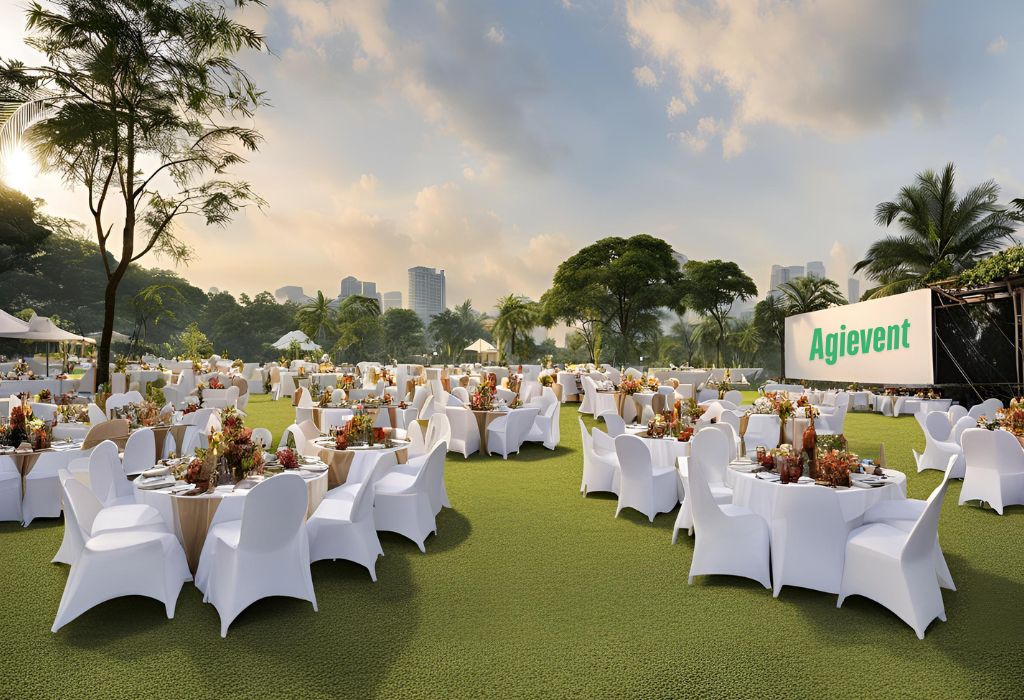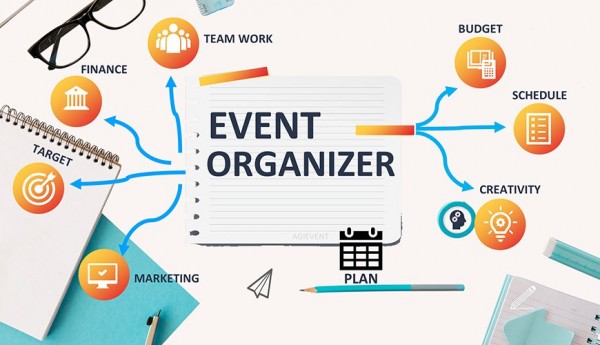Steps to Organizing a Perfect Wedding Reception

A wedding reception is a sacred and special moment that marks the peak of a couple’s wedding journey. On this joyful day, the bride and groom want to share happiness with their families and closest friends. Behind this beautiful moment, however, lies a long process that requires careful planning to ensure everything runs smoothly and leaves a lasting impression.
Planning a wedding reception is not easy. There are countless details to consider—venue selection, decoration theme, guest list, and catering choices. That's why it's essential to follow structured steps to make sure every aspect is well handled.
Here are the essential steps in organizing a memorable and successful wedding reception:
1. Decide on the Wedding Theme and Concept
The first and most important step is to choose your wedding theme. This theme will become the foundation of your entire wedding—from decorations, attire, invitations, to venue selection. Some popular wedding themes include:
-
Traditional (Javanese, Sundanese, Minang, Balinese, etc.)
-
Modern minimalist
-
Rustic or boho chic
-
Elegant and glamorous
-
Garden party / outdoor wedding
Choosing a theme early helps filter vendors, define your color palette, and shape the overall vibe of the event.
2. Create a Budget Plan
Once your concept is in place, it’s time to draft a realistic budget based on your priorities. The ideal wedding is one that aligns with your financial capability—not one that forces you to overspend.
Common budget items include:
-
Venue rental
-
Decoration
-
Catering
-
Attire for bride, groom, and family
-
Photography and videography
-
Entertainment (band, MC, sound system)
-
Invitations and souvenirs
-
Makeup artist services
-
Miscellaneous administrative fees (especially for cultural/traditional ceremonies)
Tip: Set aside at least 10% of your total budget for unexpected expenses.
3. Choose the Date and Venue
Date and location are two critical aspects that must be decided early. Choose a date that allows enough time for preparation—ideally 6 to 12 months ahead.
For the venue, consider the following factors:
-
Guest capacity
-
Accessibility and location
-
Facilities such as dressing rooms, parking, and restrooms
-
Alignment with your chosen wedding theme
Some couples also opt for sentimental venues, like family homes or the place they first met.
4. Prepare the Guest List
Next, create your guest list, as this will affect many other decisions such as venue size, food portions, and seating arrangements.
You can categorize guests as follows:
-
Immediate family
-
Extended family
-
Co-workers
-
School/university friends
-
Business contacts
Use spreadsheets or guest list apps to help keep track.
5. Book Your Wedding Vendors
Vendors are essential partners in the success of your wedding. Take time to find the right vendors that match your needs and wedding style. You’ll typically need:
-
Decorators
-
Caterers
-
Wedding organizer (WO)
-
Makeup artist
-
Photographers and videographers
-
Entertainment (band, singers, MC)
-
Bridal attire rental/designer
Always research thoroughly, check portfolios, read reviews, and meet in person when possible.
6. Prepare Invitations and Souvenirs
Invitations can be printed or digital. Choose a design that reflects your theme. Many couples now opt for interactive wedding websites that include all event info and RSVP systems.
For souvenirs, choose practical, meaningful, and budget-friendly items. Popular souvenir ideas include:
-
Scented candles
-
Mini potted plants (succulents)
-
Handmade soaps
-
Local snacks or cookies
-
Personalized tumblers or bottles
7. Plan Attire and Makeup
Wedding attire is one of the most prominent visual elements. If you’re doing a traditional ceremony, make sure the attire respects the culture you’re representing.
Common attire sets include:
-
Outfits for the wedding ceremony
-
Reception attire
-
After-party outfits (optional)
Schedule at least 2–3 fittings ahead of time. Also, hire a professional makeup artist who understands your skin tone and facial features to achieve a flawless and long-lasting look.
8. Conduct a Final Rehearsal and Prepare a Backup Plan
A few days before the event, conduct a rehearsal with your wedding organizer and vendors. This "run-through" helps anticipate any technical issues or timing conflicts.
Also, always have a plan B, especially for outdoor events. This could be in the form of a backup indoor location or rental tents in case of rain.
9. Take Care of Your Health and Well-Being
Planning a wedding can be physically and mentally exhausting. Don’t forget to take care of yourself:
-
Get enough sleep
-
Eat healthy meals
-
Do light exercise like yoga or walking
-
Take breaks from wedding talk and enjoy some me-time
Many couples regret not enjoying the process due to stress. So remember to breathe and enjoy each moment.
10. Wedding Day: Be Present and Enjoy Every Moment
On your big day, trust your team and vendors to handle the details. Focus on celebrating your love with your partner and guests. Designate a PIC (person in charge), either from your family or WO, to oversee the flow and troubleshoot any issues.

Example Timeline for Wedding Event Planning by an Event Organizer
Organizing a wedding is one of the most significant moments in a person’s life. However, the process involved in planning and executing this event can often be complex and requires meticulous attention to detail. To assist future couples and event organizers, here is a comprehensive guide to a wedding event timeline that can serve as a reference.
The Importance of a Timeline in Wedding Planning
A well-structured timeline is the key to a successful wedding. With a clear timeline, all parties—including the couple, family members, vendors, and event organizers—can work efficiently and stay coordinated. Additionally, a timeline ensures that no important details are overlooked and that every aspect of the event is prepared meticulously.
In this article, we will provide an example timeline covering stages from 12 months before the big day up to the wedding itself. Each phase will be explained in detail to ensure clarity and ease of application.
12-9 Months Before the Big Day: Initial Preparation
This phase is crucial for laying the groundwork for the wedding. It’s the time to make major decisions and secure primary vendors.
Key Steps:
-
Set a Budget
Determine the overall budget for the wedding. This will serve as a guideline for choosing venues, vendors, and decorations. Be sure to set aside a contingency fund for unexpected expenses. -
Choose a Wedding Date
Select a wedding date that works for the couple, family members, and key vendors such as the venue or catering service. -
Select a Venue
Research and book the wedding venue as soon as possible, especially if you’re choosing a popular location. Consider guest capacity, accessibility, and available facilities. -
Assemble Your Vendor Team
Choose primary vendors such as photographers, caterers, decorators, musicians/DJs, and MCs. Ensure they have a good reputation and a portfolio that aligns with your vision. -
Design the Theme and Concept
Discuss the wedding theme with your partner and event organizer. Are you envisioning a modern, traditional, outdoor, or themed wedding? Decide on a color palette, dress style, and decorative elements. -
Create a Guest List
Draft an initial guest list. This will help you estimate the number of seats, meals, and souvenirs required. -
Order the Bride’s Gown and Groom’s Suit
Begin searching for the bride’s gown and groom’s suit. The process of adjustments and design revisions usually takes several months.
8-6 Months Before the Big Day: Focus on Details
After establishing the foundation, it’s time to perfect the finer details. This phase involves selecting additional elements that will make the event even more special.
Key Steps:
-
Order Souvenirs and Invitations
Choose invitation designs that match the wedding theme. If using souvenirs, ensure their design is unique and reflects your personality as a couple. -
Plan the Menu
Discuss the menu with the catering service. Consider guest preferences, including vegetarian or halal options. Conduct a food tasting session to ensure quality. -
Outline the Event Program
Create a draft of the event program, from the bridal procession to group photo sessions. Coordinate with the MC or wedding planner to ensure smooth flow. -
Select Music and Entertainment
Decide on the playlist for the event. If hiring a band or DJ, ensure they understand the atmosphere you wish to create. -
Finalize Decoration Design
Finalize the decoration concept with the vendor. Discuss table layouts, stage design, photo areas, and other elements. -
Hold Regular Meetings with Vendors
Schedule regular meetings with vendors to ensure everyone stays aligned with the plan.
5-3 Months Before the Big Day: Finalization and Technical Preparation
This phase is the time to ensure all technical aspects are ready. Focus on finalizing documents, logistics, and event simulations.
Key Steps:
-
Finalize the Guest List
Confirm the final number of guests. Send out physical or digital invitations according to your preference. -
Handle Legal Documents
Ensure all legal documents, such as marriage certificates or venue permits, are complete and submitted on time. -
Final Fitting for Gowns and Suits
Conduct the final fitting for the bride’s gown and groom’s suit. Ensure the fit and design are perfect. -
Conduct a Rehearsal
Hold a full rehearsal with all vendors and the event team. This is an opportunity to identify potential issues and adjust plans accordingly. -
Purchase Additional Accessories
Prepare accessories such as veils, shoes, jewelry, boutonnieres, or wedding rings. -
Check Logistics Availability
Ensure all necessary items, such as tables, chairs, tableware, and sound systems, have been confirmed by vendors.
2 Months Before the Big Day: Last Adjustments
At this point, all major elements should already be in place. Focus on minor adjustments and mental preparation.
Key Steps:
-
Confirm with Vendors
Contact all vendors to ensure they are ready and understand their schedule and tasks. -
Create a Final Checklist
Make a list of everything that needs to be done before the big day, including item delivery, transportation, and the event program. -
Prepare Speeches or Remarks
If you plan to give a speech, write and practice the script to boost confidence on the big day. -
Share the Itinerary with Family Members
Ensure family members involved in the event understand their respective roles.
1 Month Before the Big Day: Intensive Preparation
This is a critical phase where all elements must be fully ready. Avoid making major changes to the plan.
Key Steps:
-
Finalize Vendor Payments
Ensure all payments to vendors have been completed as per agreement. -
Check Weather Conditions
If the event is outdoors, monitor weather forecasts and prepare a backup plan. -
Share Transportation Details
Provide transportation details to VIP guests or family members who need them. -
Prepare the Final Event Program
Share the finalized program with all involved parties, including the MC, photographer, and vendors.
1 Week Before the Big Day: Final Countdown
All preparations should be complete at this stage. Focus on coordination and relaxation.
Key Steps:
-
Last Confirmation with Vendors
Contact vendors to ensure everything is proceeding as planned. -
Check Items to Bring
Ensure all personal items, such as the gown, suit, and accessories, are packed neatly. -
Rest and Stay Healthy
Take time to rest and maintain your health to look your best on the big day.
On the Big Day: Event Execution
This is the long-awaited day! Delegate all technical matters to the event organizer and enjoy your special moment.
Key Steps:
-
Arrive Early at the Venue
Make sure you arrive early to handle any last-minute preparations. -
Coordinate with the Team
Let the event organizer manage all technical aspects while you focus on enjoying the wedding. -
Enjoy the Moment
Relax and savor every second of your special day.
Conclusion
A wedding timeline is an essential tool that helps couples and event organizers plan events systematically and efficiently. By following the steps outlined above, you can ensure that every detail of the wedding is covered without excessive stress. Remember, good communication among all parties is the key to a successful wedding event.

AGI EVENT
Related content
Event - Tour








